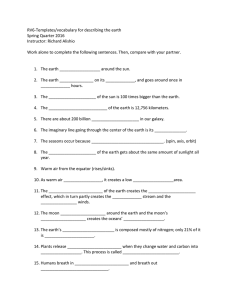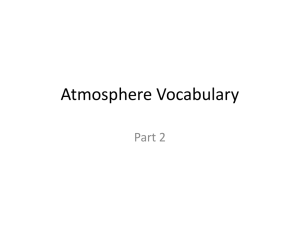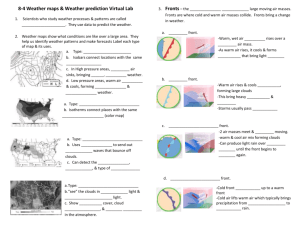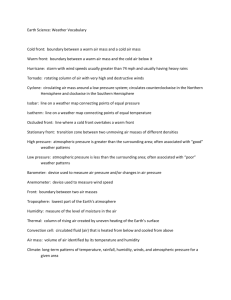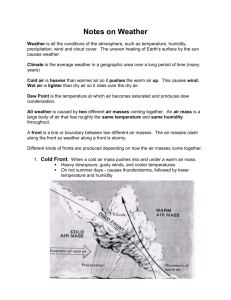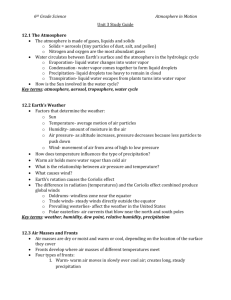Weather Terms Fronts Warm Front
advertisement
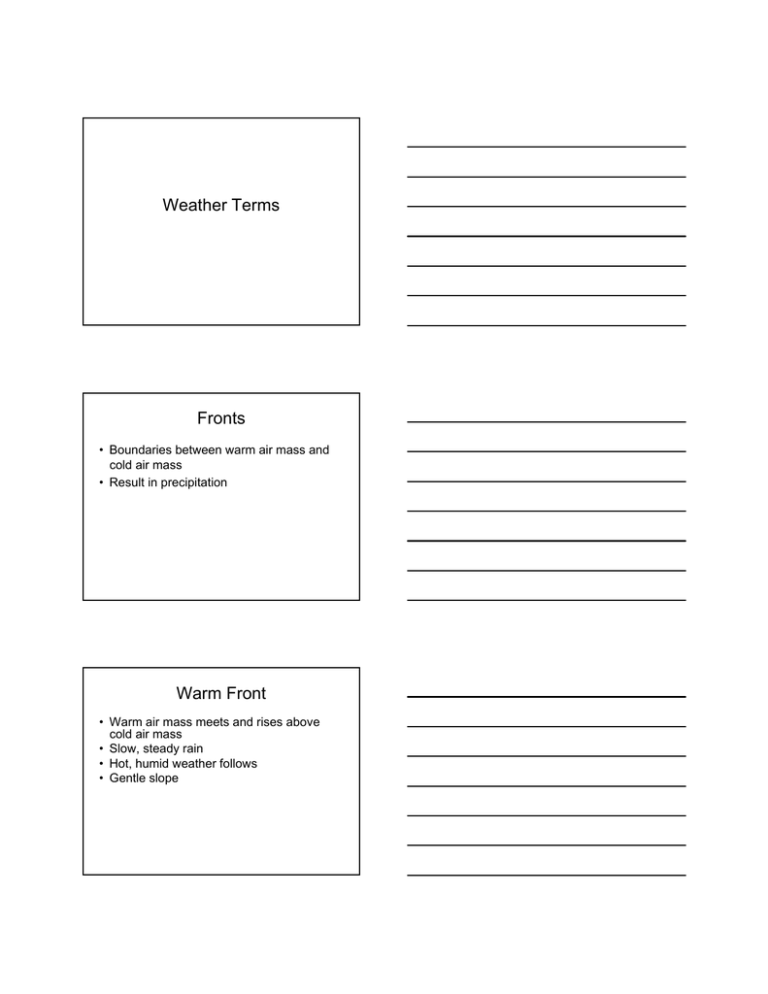
Weather Terms Fronts • Boundaries between warm air mass and cold air mass • Result in precipitation Warm Front • Warm air mass meets and rises above cold air mass • Slow, steady rain • Hot, humid weather follows • Gentle slope Cold Front • Cold air mass overtakes and pushes under the warm air mass • Heavy rains and violent thunderstorms • Fair, cool weather follows • Steep slope Stationary Front • Cold air mass and a warm air mass run into each other but, neither is able to make the other move out of the way • Cloudy, overcast, some light showers or drizzle • Conditions do not change until one of the fronts starts to move again Pressure Systems • The Earth's atmosphere exerts a pressure on the surface • Standard pressure at sea level is defined as 101.3 kPa, but the actual pressure in an area varies • These areas are all relative to each other so what defines high pressure will change depending on the area around it • Areas of high and low pressure are caused by ascending and descending air • As air warms, it ascends leading to low pressure at the surface • As air cools, it descends leading to high pressure at the surface High Pressure System • The winds tend to be light and blow in a clockwise direction (in the northern hemisphere) • The air is descending, which reduces the formation of cloud and leads to light winds and settled weather conditions Low Pressure System • Wind blow in a counterclockwise direction (in the northern hemisphere) • The air is rising • As it rises and cools, water vapor condenses to form clouds and perhaps precipitation • Weather is often unsettled • There are usually frontal systems associated with low pressure systems Weather Map Examples


